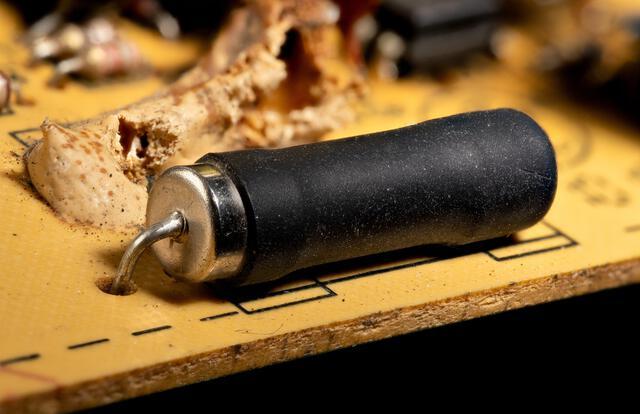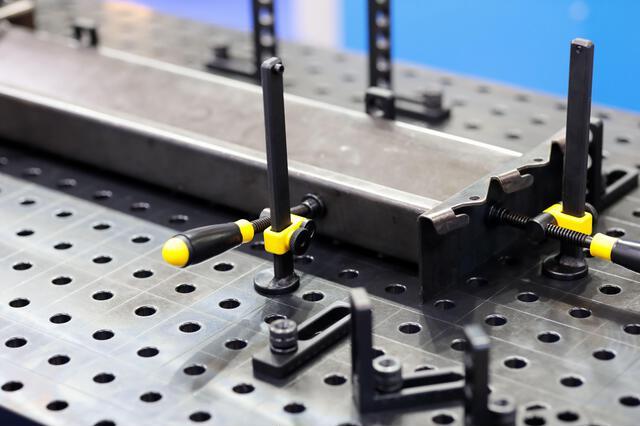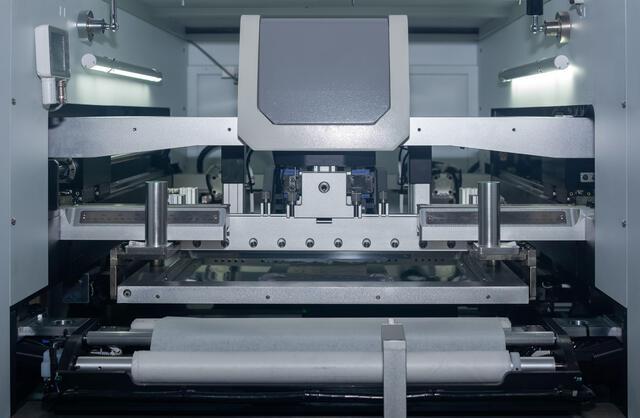Content Menu
● Understanding SMT Technology
● Key Components of an SMT Line
● Cost Breakdown of an SMT Line
● Typical Price Ranges for SMT Lines
● Factors Influencing Costs
● Cost-Saving Strategies
● Future Trends in SMT Technology
● Conclusion
● FAQ
>> 1. What is the average cost of an SMT line?
>> 2. What are the main components of an SMT line?
>> 3. How often does maintenance need to be performed on SMT equipment?
>> 4. Can I save money by buying used SMT equipment?
>> 5. What factors affect the cost of setting up an SMT line?
Surface Mount Technology (SMT) has revolutionized the electronics manufacturing industry by enabling efficient and precise assembly of electronic components on printed circuit boards (PCBs). As demand for electronic devices continues to grow, understanding the costs associated with setting up an SMT line becomes crucial for manufacturers. This article delves into the various factors that influence the cost of SMT line machines, providing a comprehensive overview for businesses considering this investment.

Understanding SMT Technology
SMT is a method used to mount electronic components directly onto the surface of PCBs. Unlike traditional through-hole technology, which requires drilling holes in the PCB for component leads, SMT allows for a more compact design and higher component density. This technology is widely used in consumer electronics, automotive applications, and industrial machinery due to its efficiency and reliability.
The adoption of SMT has led to significant advancements in electronic device performance, including improved signal integrity and reduced electromagnetic interference. As devices become smaller and more complex, the demand for SMT continues to rise.
Key Components of an SMT Line
An SMT line typically consists of several key components, each contributing to the overall cost:
- Pick and Place Machines: These machines are responsible for accurately placing components onto the PCB. They can vary significantly in price based on speed, accuracy, and automation level. Advanced models can handle a wide variety of components, including tiny chips and larger connectors.
- Solder Paste Printers: Used to apply solder paste to the PCB pads before component placement, these printers are essential for ensuring strong solder joints. The precision of these printers directly impacts the quality of the final product.
- Reflow Ovens: After components are placed, PCBs pass through reflow ovens where solder paste is melted to create permanent connections. The type of reflow oven—convection, infrared, or vapor phase—can affect both performance and cost.
- Inspection Equipment: Automated Optical Inspection (AOI) machines check for defects in component placement and solder joints. Investing in high-quality inspection equipment can help reduce rework costs and improve overall product quality.
- Conveyors and Handling Equipment: These facilitate the movement of PCBs between different stages of the assembly process. Efficient handling systems can minimize downtime and enhance throughput.
Cost Breakdown of an SMT Line
The cost of an SMT line can vary widely based on several factors:
1. Type of Equipment: The choice between manual, semi-automatic, or fully automatic machines significantly affects costs. For example:
- Entry-level pick-and-place machines can start around $10,000.
- High-end models with advanced features can exceed $500,000.
2. Production Capacity: The speed at which a machine operates is measured in components per hour (CPH). Higher capacity machines generally come with a higher price tag:
- Low-capacity machines (3,000-5,000 CPH) may cost between $20,000 and $50,000.
- Mid-range machines (10,000-35,000 CPH) can range from $100,000 to $200,000.
- High-capacity machines (over 100,000 CPH) can reach prices upwards of $700,000.
3. Configuration and Customization: Custom configurations tailored to specific production needs can add to costs. For instance:
- Adding additional feeders or specialized handling equipment increases both initial investment and maintenance costs.
- Custom software solutions for process management may also be necessary.
4. Installation and Training: Proper installation and training are crucial for effective operation. Companies should budget an additional 10-15% of the equipment cost for these services. This includes not only physical setup but also employee training to ensure efficient use of machinery.
5. Maintenance Costs: Regular maintenance is essential to ensure optimal performance and longevity of the equipment. Annual maintenance costs can range from $20,000 to $100,000 depending on the complexity of the line.
6. Consumables: Items such as solder paste and cleaning solvents also contribute to ongoing operational costs. These typically range from $5,000 to $20,000 annually depending on production volume.
Typical Price Ranges for SMT Lines
Based on current market data:
- Low-End Systems: Basic systems suitable for small-scale production or prototyping can start at around $10,000 to $50,000.
- Mid-Range Systems: More advanced setups that include automated features typically range from $100,000 to $300,000.
- High-End Systems: Fully automated lines capable of high-volume production can cost anywhere from $300,000 to over $1 million depending on specifications and configurations.

Factors Influencing Costs
Several factors influence the overall cost of an SMT line beyond just equipment prices:
1. Component Complexity: More complex assemblies with diverse component types require more sophisticated machinery and processes. For example:
- Assemblies involving mixed technologies (SMT combined with through-hole) may necessitate additional equipment or modifications.
2. Production Volume: Higher production volumes often justify investing in more expensive equipment due to lower per-unit costs over time. Economies of scale play a significant role here; as production increases, fixed costs are spread over a larger number of units.
3. Market Conditions: Fluctuations in raw material prices and supply chain issues can impact overall costs significantly. For instance:
- A sudden increase in demand for specific electronic components may lead to price hikes that affect overall project budgets.
4. Geographic Location: Labor costs vary by region; thus companies must consider local economic conditions when budgeting for labor-intensive tasks like training and maintenance. Additionally:
- Import tariffs or trade policies may impact equipment pricing for companies sourcing machinery from abroad.
Cost-Saving Strategies
To manage costs effectively while setting up an SMT line:
- Invest in Used Equipment: Purchasing refurbished or second-hand machinery can significantly reduce initial investment costs without sacrificing quality.
- Optimize Production Processes: Implementing lean manufacturing principles can help minimize waste and improve efficiency.
- Negotiate with Suppliers: Building strong relationships with suppliers can lead to better pricing on components and materials.
- Consider Automation Gradually: Start with semi-automatic systems that allow for gradual scaling up as demand increases.
Future Trends in SMT Technology
As technology continues to evolve, several trends are shaping the future of SMT lines:
1. Increased Automation: The push towards Industry 4.0 is driving manufacturers to adopt more automated solutions that integrate IoT technologies for real-time monitoring and predictive maintenance.
2. Miniaturization: As electronic devices become smaller yet more powerful, there is a growing need for advanced SMT solutions that can handle miniaturized components without compromising quality.
3. Sustainability Initiatives: Manufacturers are increasingly focused on sustainable practices by reducing waste during production processes and utilizing eco-friendly materials whenever possible.
4. Advanced Inspection Technologies: The integration of AI-driven inspection systems enhances defect detection capabilities beyond traditional AOI methods by utilizing machine learning algorithms to improve accuracy over time.
5. Flexible Manufacturing Systems (FMS): These systems allow manufacturers to adapt quickly to changing production requirements without significant downtime or reconfiguration costs.
Conclusion
Investing in an SMT line machine is a significant commitment that requires careful consideration of various factors including equipment type, production capacity, ongoing operational costs, and future trends in technology. By understanding these elements and planning accordingly, manufacturers can make informed decisions that align with their production needs while optimizing their budget.

FAQ
1. What is the average cost of an SMT line?
The average cost ranges from $10,000 for basic systems to over $1 million for high-end automated lines depending on specifications and capabilities.
2. What are the main components of an SMT line?
The main components include pick-and-place machines, solder paste printers, reflow ovens, inspection equipment (AOI), conveyors, and handling systems.
3. How often does maintenance need to be performed on SMT equipment?
Regular maintenance is essential; companies should budget annually between $20,000 to $100,000 depending on equipment complexity and usage levels.
4. Can I save money by buying used SMT equipment?
Yes, purchasing refurbished or second-hand machinery can significantly reduce initial investment costs while still providing reliable performance.
5. What factors affect the cost of setting up an SMT line?
Factors include type of equipment chosen (manual vs automatic), production capacity required, complexity of components being assembled, installation/training expenses, maintenance needs, and consumable materials costs.




















